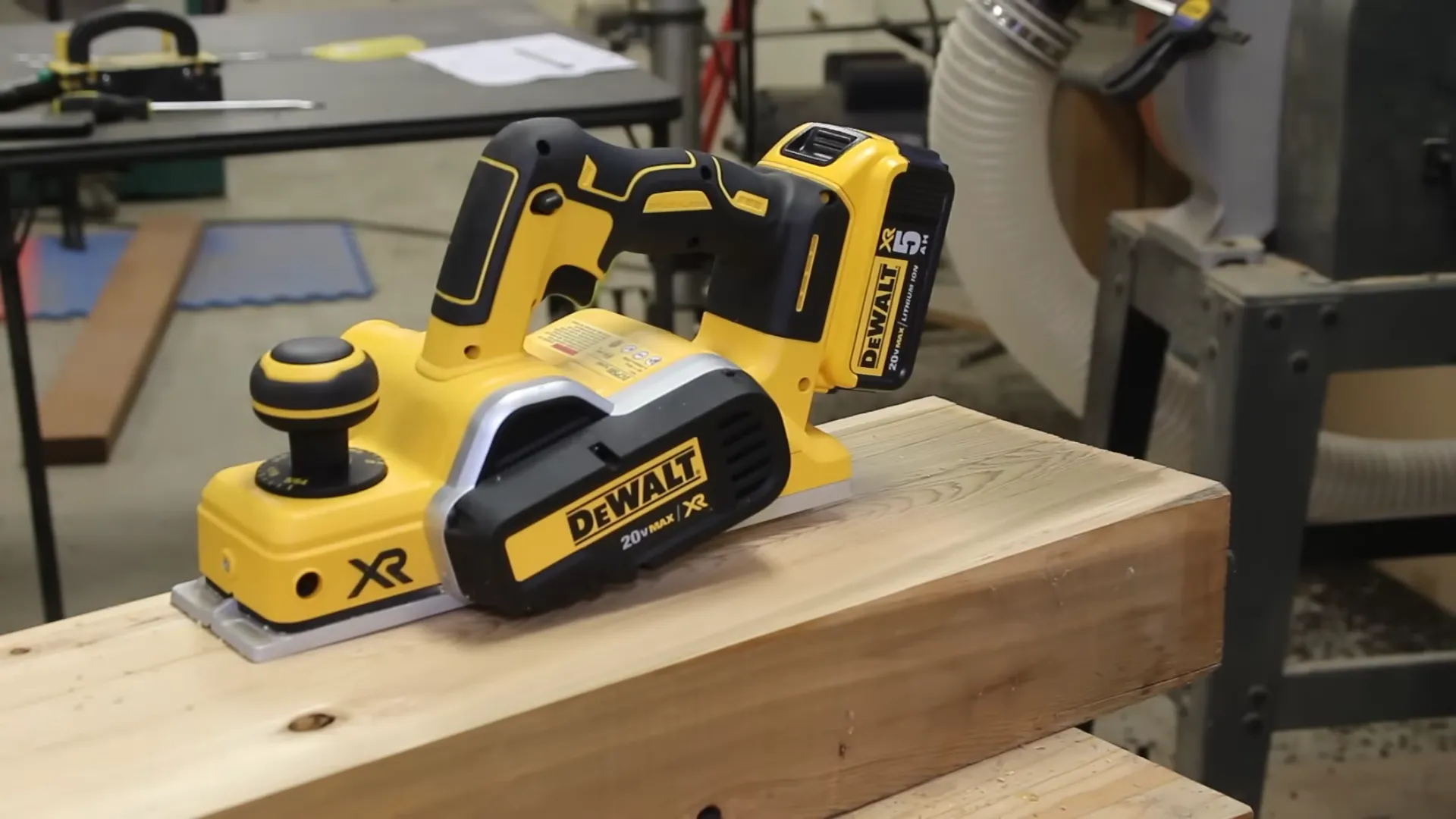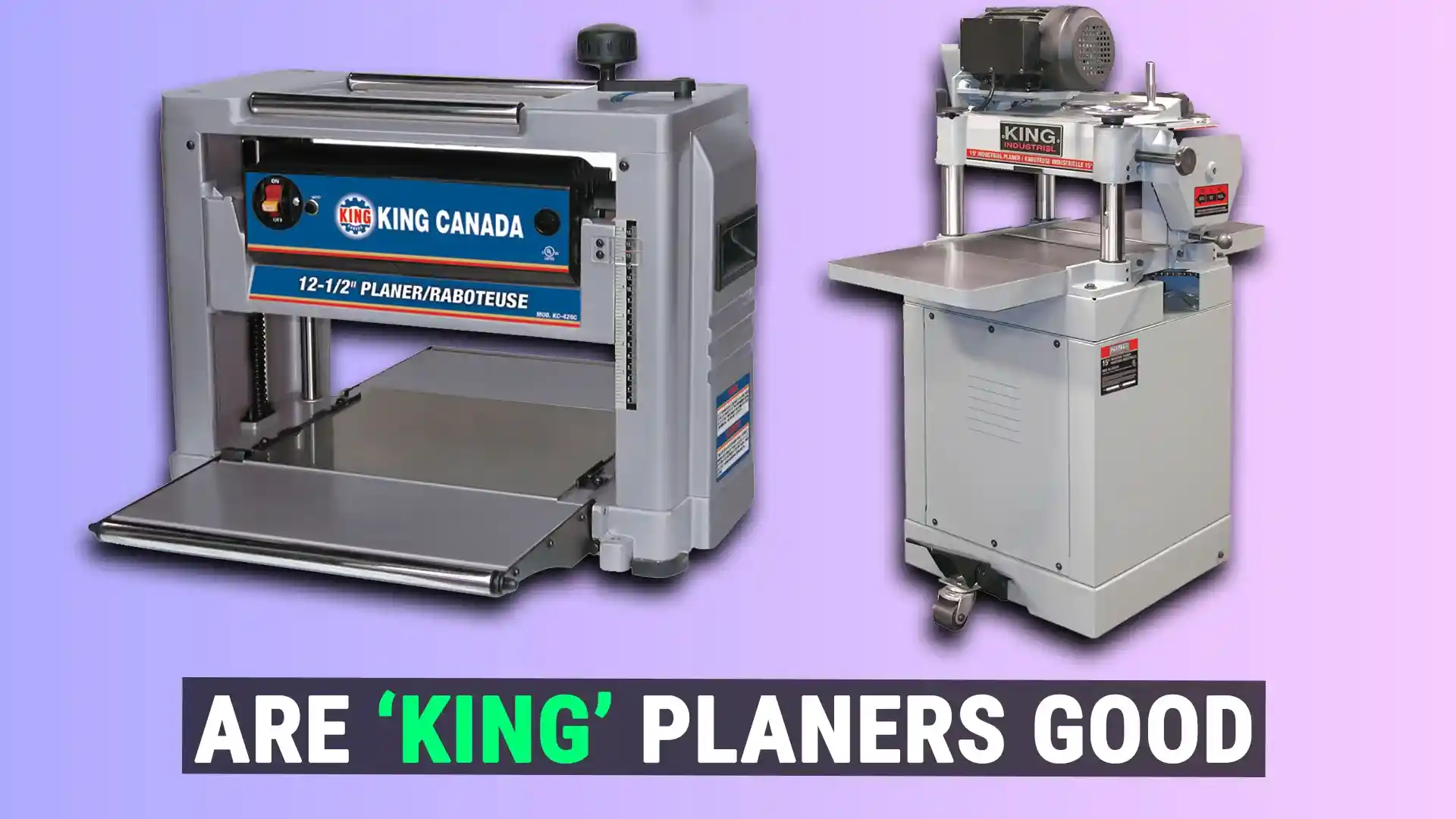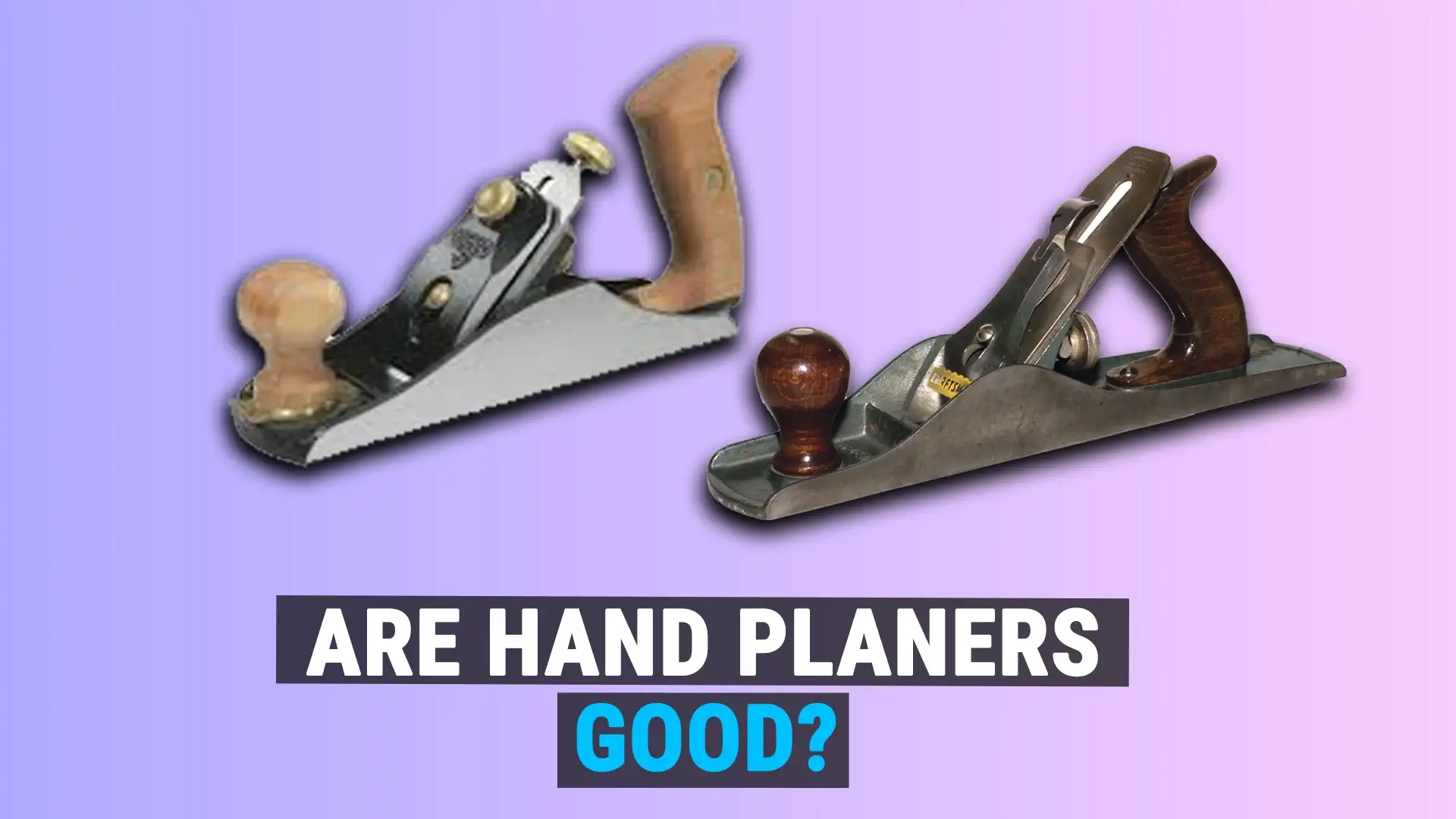11 Common Milwaukee Planer Problems [Easy Fixes]
Are you tired of your Milwaukee planer leaving your boards uneven or making excessive noise?
Don’t worry, we’ve got you covered!
In this guide, we’ll reveal the most common problems encountered by Milwaukee planer owners and share some quick fixes to get your planer working like a dream again.
Say goodbye to snipe, dull blades, and feeding issues, and get ready to plane like a pro!
Causes Of Poor Planing Performance
Poor planing performance can be caused by a number of different issues.
A dull blade is one of the most common causes of poor performance.
Dull blades won’t cut as evenly and accurately, resulting in an uneven surface.
Another cause could be loose or improper tension on the cutting blades, which can lead to sniping or uneven cuts.
It’s also important to make sure your feed rate is correct; too fast or too slow will result in uneven cuts.
Finally, the thickness of the material being planed must also be taken into account; thinner materials require a slower feed rate for proper cutting.
To fix these problems, you’ll need to check the blade for sharpness and tension it properly, adjust your feed rate accordingly, and pay attention to the thickness of material being planed.
Unbalanced Feed Or Inconsistent Pressure
Unbalanced feed or inconsistent pressure can be a real headache when it comes to Milwaukee planers.
It’s an issue that needs to be taken seriously, and luckily there are some simple fixes.
The first thing to do is check the planer’s table alignment and make sure it’s level.
If it’s not, you can adjust the screws on the angle plates so that they’re even.
If that doesn’t work, then you may need to replace the feed rollers.
The rollers should be replaced if they’re worn out or misaligned, as this could cause your material to feed unevenly through the planer.
Finally, make sure that you’re using sharp knives for your planing job; dull knives will cause your material to feed unevenly and create inconsistent pressure on the wood.
Taking these steps should help fix any unbalanced feed or inconsistent pressure issues with your Milwaukee planer.
Uneven Or Erratic Surfaces
Uneven or erratic surfaces are a common issue with Milwaukee planers.
This can be caused by several factors, such as the blades being dull or improperly adjusted.
Dull blades will cause an uneven surface, while improper adjustment of the blade height can lead to inconsistent pressure on the wood and ultimately an uneven surface.
The fix for dull blades is to replace them with new ones and adjust the blade depth until it is in line with the material being cut.
To ensure that there is even pressure on the wood during cutting, check that all four corners of the planer base are resting evenly on the surface.
Additionally, be sure to check for any obstructions or debris in the way of the blade that might prevent it from cutting smoothly.
Finally, always keep your planer clean and free of dust and dirt which can lead to poor performance and uneven surfaces.
Loud Operation And Vibrations
Loud operation and vibrations can be incredibly jarring, both to the user’s ears and their nerves.
They can also cause damage to the planer itself over time.
Fortunately, these common issues can often be fixed with simple solutions.
First, check for any loose screws or bolts.
Even a single screw that is not tight enough can lead to vibration and noise.
It’s also important to make sure the blades are properly sharpened and balanced; if they’re not, they may produce excess noise.
Finally, check your planer’s alignment; misalignment can cause increased friction between the cutter head and the table, leading to louder operation and vibrations.
By following these steps, you should be able to reduce noise and vibration levels in your planer significantly – ensuring a safe and enjoyable experience for both you and your machine!
Difficulty In Feeding Material Through The Planer
Feeding material through a planer can be difficult if the tension of the feed rollers isn’t adjusted correctly.
If the tension is too tight, it can cause the material to buckle or jam.
To fix this problem, check the tension of the feed rollers and adjust it accordingly.
If that doesn’t work, try making sure all debris is removed from the rollers and belt.
If adjusting the tension does not help, then it’s likely that something else is causing the issue.
Check for any wear or damage on both sides of the blades.
If there are any visible signs of damage or wear, replace them with new ones as soon as possible.
Additionally, make sure that all components in the planer are properly lubricated and maintained to ensure a smooth feeding process.
Snipe At The Ends Of Boards
Snipe is a common problem in planers, especially at the ends of boards.
It occurs when the board’s end is fed too slowly or too quickly through the machine and causes a dip in the wood’s surface.
Fortunately, it can be easily fixed.
The first step is to check if the feed roller pressure needs to be adjusted; if it’s too tight, the board won’t feed properly and will cause snipe.
Loosening the pressure should eliminate snipe at the ends of boards.
The second step is to check whether there are chips clogging up the cutter head or chip breaker.
If so, they need to be removed and replaced with new ones.
Doing this should also help reduce snipe.
With these steps taken care of, your planer will produce smooth, accurate results every time.
Deteriorated Blades And Damage To Blades
Transition: As the blades of a Milwaukee planer get worn down, they must be replaced to ensure smooth operation.
When blades become dull or damaged from improper use, it is important that these blades be replaced immediately.
It is not uncommon for blades to become chipped or dented from excessive force applied during a planing procedure.
If this occurs, the blade should be replaced with a new one to prevent further damage.
Additionally, if the blades are not sharpened regularly, they will eventually become too dull to produce an acceptable finish on the wood being planed.
It is also important that the blade guard is in good working order and properly adjusted for the job intended.
A malfunctioning or misaligned guard can cause excessive wear and tear on the blades, resulting in dangerous conditions while operating the planer.
Keeping up with regular maintenance and inspections of all parts of your Milwaukee Planer will help reduce any potential risks associated with its use.
Inadequate Dust Collection System
Dust collection can be a headache for Milwaukee planer owners.
It’s like trying to corral a wildfire.
But with the right know-how and some elbow grease, you can get your dust collection under control.
One common issue is that the dust collection system isn’t powerful enough to keep up with the debris.
This can lead to clogs in the hose or bag, which renders the entire system useless.
To fix this, you’ll need to invest in a higher-powered system that can handle the output of your planer.
It may be more expensive upfront, but it’ll save you time and frustration in the long run.
If you don’t want to upgrade your dust collection system, there are other methods you can try to keep it running smoothly.
Regularly cleaning or replacing filters and hoses will help minimize clogging.
You should also make sure no obstructions are blocking airflow before turning on your machine – any blockage will reduce suction power and cause problems with debris buildup.
With these tips in hand, you can keep your planer running cleanly and efficiently for years to come!
Planer Won’t Turn On Or Off
Fortunately, if your planer won’t turn on or off, the fix is usually simpler than the dust collection system.
The most common problem here is either a faulty switch or a tripped circuit breaker.
Here are five things you should check when your planer won’t turn on or off:
- Check to see if the power cord is plugged into a working outlet.
- Inspect the switch for any loose connections, as well as any visible damage to it.
- Make sure that there isn’t an issue with the circuit breaker itself.
- Look for any signs of wear and tear, such as fraying wires or broken connectors.
- Inspect the motor housing for any signs of overheating which could be causing problems with the electrical system.
If none of these steps solve your problem, then it’s likely that you have a more serious electrical issue and you’ll need to contact an electrician or repair technician to diagnose and repair it properly.
Overheating Motor Or Burning Smell From Motor
The first thing to check is the motor’s bearings.
If they are worn out or need lubrication, they can cause the motor to overheat.
A simple solution is to replace the bearings or add oil as recommended in the manual.
If this doesn’t help, then it’s possible there’s an electrical fault somewhere in the wiring that needs to be fixed.
This could include something as simple as a loose connection or a more serious issue such as a faulty capacitor or switch.
It’s best to consult a professional technician if you suspect an electrical problem.
In any case, it’s best to address these issues quickly and not let them linger, so you don’t end up damaging your Milwaukee planer even further.
Poor Surface Finish After Planing
A poor surface finish after planing can feel like a slow burn in your spirit.
The cause of this problem could be anything from dull blades to an uneven feed rate.
To get a good finish, the easiest solution is to start by sharpening the blades of the planer.
If that doesn’t work, then you may need to adjust the feed rate.
This requires adjusting the tension on the drive belt or motor pulley, depending on how your planer is set up.
If that’s not enough to fix it either, you may need to replace the blades with new ones or even make sure that there are no obstructions in the way of them cutting properly.
A good test for this is to take some scrap wood and pass it through your planer and check if it comes out with a smooth finish.
If not, then you know you have an issue with the blades.
With all these solutions, you should be able to get a great surface finish from your planer in no time!
Clogged Or Jammed Planer Blades
When planer blades become clogged or jammed, it affects the performance of the Milwaukee Planer.
Here are 3 common problems and their fixes:
1. Dust accumulation – Dust particles can accumulate on the blades and cause them to become clogged.
To fix this issue, you should use compressed air to blow away any dust that has accumulated on the blades.
2. Damaged blades – Damaged blades can also prevent the planer from operating correctly.
To fix this, you should replace any damaged or worn out blades with new ones.
3. Old blades – Over time, old planer blades can become dull and lose their effectiveness.
To fix this, you should sharpen the old blades or replace them with new ones to ensure that they are working efficiently again.
By addressing these issues, you can restore your Milwaukee Planer’s performance and get back to work in no time!
Conclusion
In conclusion, planers can be troublesome if not properly maintained.
However, with the right knowledge and a little elbow grease, many common Milwaukee planer problems can be fixed relatively easily.
For example, unbalanced feed or inconsistent pressure can be remedied by adjusting the blades to the manufacturer’s recommended settings for your particular model of planer.
Similarly, difficulty in feeding material through the planer may be solved by switching to a different type of blade.
Moreover, clogged or jammed planer blades can easily be taken care of by simply sharpening them or replacing them as necessary.
Overall, I hope this article has shed some light on common Milwaukee planer problems and their fixes.
Just remember: no matter how difficult a problem may seem at first glance, it’s almost always possible to find a solution that works for you and your tool—it’s just a matter of taking the time to figure out what that is.
Like they say: where there’s a will, there’s a way!



